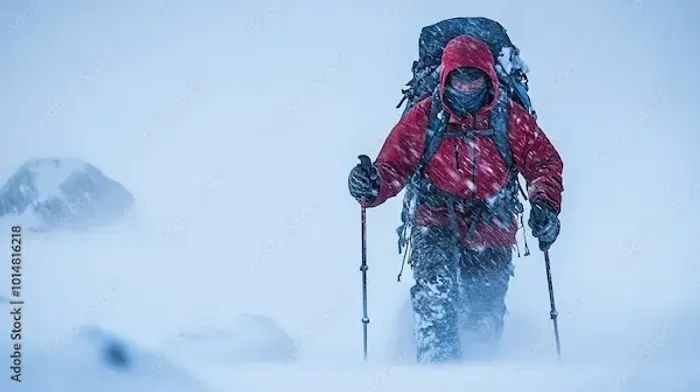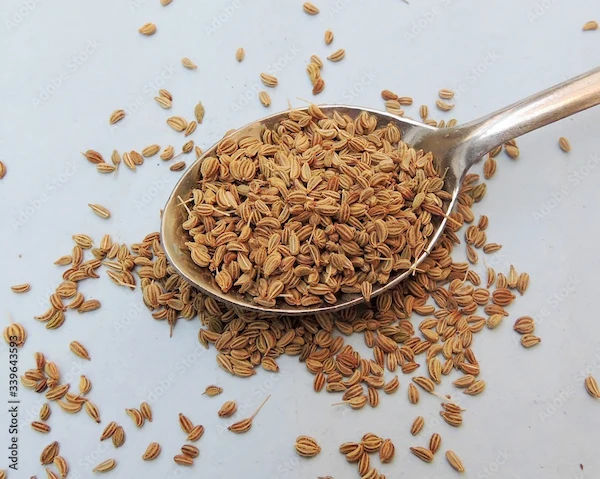Understanding Hypothermia
Learn how to recognise, prevent, and treat hypothermia safely. Understand the signs, stages, first aid, and medical management of hypothermia, plus prevention tips for infants, older adults, and outdoor enthusiasts.


A winter walk, a rainy hike, a power outage, or an unexpected dip in cold water—everyday situations can lead to hypothermia when your body loses heat faster than it can produce it. Hypothermia isn’t just a mountaineer’s problem; it can affect older adults at home, infants in cool environments, outdoor workers, and anyone caught in wet, windy weather. Recognising early signs and acting quickly can be lifesaving.
This guide demystifies hypothermia for the general public: what it is, how to recognise symptoms at each stage, and the first aid steps that help—while avoiding common mistakes. You’ll learn how your body loses heat, who’s most at risk, and how to prevent hypothermia with smart clothing, nutrition, and planning. We’ll cover what hospital care looks like for moderate to severe cases, plus special advice for infants, older adults, and people who enjoy cold-weather or water activities. Along the way, we’ll share practical checklists and myth-busting tips that competing articles often miss.
Whether you’re caring for family, planning a winter outing, or preparing for storms, this evidence-based article on hypothermia equips you to stay safer—and to know when it’s time to call for help.
What Is Hypothermia?
Hypothermia is a drop in core body temperature below 35°C (95°F), where normal physiology begins to falter and vital organs are at risk. Doctors often categorise severity by temperature:
- Mild: 32–35°C (89.6–95°F)
- Moderate: 28–32°C (82.4–89.6°F)
- Severe: below 28°C (82.4°F)
In everyday terms, think of hypothermia as a mismatch between heat loss and heat production. If you’re wet and exposed to wind, your body sheds heat rapidly; if your clothing traps warmth and stays dry, you retain heat better. Hypothermia can develop quickly in cold water, steadily in cold weather, and quietly in cool indoor settings among older adults.
Why it matters: As core temperature falls, shivering becomes less effective, judgment and coordination decline, and the heart can become irritable. Moderate to severe hypothermia is a medical emergency. The good news is that mild hypothermia often responds to prompt first aid (warmth, dry clothing, warm non-alcoholic beverages) if the person is stable, and medical care can rewarm those who are more severely affected.
How Your Body Loses Heat?
Here’s how your body loses warmth and what makes cold exposure dangerous:
- Conduction: Direct contact with cold surfaces or water. Water pulls heat away up to 25 times faster than air at the same temperature.
- Convection: Moving air or water strips the warm air layer near your skin, speeding heat loss.
- Evaporation: Sweat or wet clothing draws heat as moisture evaporates.
- Radiation: Infrared heat escaping from exposed skin and the head.
The wind-and-wet factor: A drizzly 8°C (46°F) day with gusts can pose a higher hypothermia risk than a dry, calm day at 0°C (32°F).
Afterdrop explained: Afterdrop is a continued fall in core temperature after rescue as cold blood from the limbs returns to the core during rewarming.
To reduce afterdrop risk:
- Handle gently; keep the person horizontal if possible.
- Warm the core (chest, neck, groin) rather than rubbing limbs.
- Use insulated wraps and apply heat packs to the trunk, not extremities.
Consult Top Specialists
Who Is Most at Risk?
Here’s who faces the highest risk of hypothermia and why:
- Infants: Limited shivering, higher surface-area-to-mass ratio, and reliance on caregivers.
- Older adults: Reduced heat production, thinner skin, chronic illness, and inadequate heating.
- Chronic conditions or medications: Hypothyroidism, diabetes, malnutrition, sepsis, or sedatives impair thermoregulation.
- Outdoor workers and enthusiasts: Prolonged exposure to wind and wet conditions.
- Cold-water swimmers/boaters: Rapid heat loss, risk of cold shock and capsizing.
- Alcohol/substances: Alcohol causes vasodilation and impairs judgment.
- Housing insecurity/disasters: Exposure during storms or outages.
Recognising Hypothermia: Symptoms by Stage
Here’s how to identify symptoms and act at each stage:
Mild hypothermia (32–35°C)
- Shivering, pale or cool skin, numbness, mild confusion, slurred speech, clumsiness.
- If alert and stable, rewarming with dry clothes, blankets, and warm fluids usually helps.
Moderate hypothermia (28–32°C)
- Shivering slows or stops, confusion, drowsiness, slow breathing and heartbeat.
- Emergency—call for medical help. Gentle handling and core warming needed.
Severe hypothermia (<28°C)
- Unresponsiveness, very slow pulse, rigid muscles, dilated pupils.
- May appear dead but can recover with advanced rewarming.
First Aid for Suspected Hypothermia
Here’s what to do immediately if you suspect hypothermia:
Call emergency services immediately for moderate or severe symptoms, confusion, unresponsiveness, or if rewarming isn’t working.
First aid steps for alert, breathing individuals:
- Move to a warm, dry, sheltered place.
- Remove wet clothing and replace with dry layers.
- Warm the core using blankets and warm (not hot) packs.
- Offer warm, sweet drinks if alert.
- Handle gently; keep the person horizontal.
- Monitor continuously; seek medical care if no improvement.
Medical Care: Diagnosis and Treatment in Hospital
Here’s how hospitals diagnose and treat hypothermia:
Clinicians confirm hypothermia through:
- Core temperature readings
- Mental status and vital signs
- ECG for heart rhythm changes
- Blood tests (electrolytes, glucose, infection screening)
Rewarming methods:
- Passive: Warm environment and insulation for mild cases.
- Active external: Forced warm air or radiant heat.
- Active internal: Warm IV fluids, humidified oxygen, or ECMO in severe cases.
Prevention That Works
Here’s how to stay warm and safe in cold conditions:
Layering right:
- Base: Moisture-wicking layer (synthetic or merino).
- Middle: Insulating fleece or down.
- Outer: Windproof, water-resistant shell.
- Avoid cotton—it traps moisture.
Food, fluids, pacing:
Eat and drink regularly; avoid sweating excessively.
Home preparedness:
Weatherproof your home, maintain safe heating, and check in on older adults.
Special Situations and Populations
Here’s what different groups need to know about hypothermia risks:
Infants and children: Dress warmly, maintain safe sleep environments, and avoid bulky coats in car seats.
Older adults: Review medications, ensure heating and nutrition, and monitor home temperature.
Outdoor enthusiasts: Use life jackets, follow the “1–10–1 rule,” and plan rewarming strategies.
Unique insight: Prepare a “transition plan” to get dry, warm, and fed within 10–15 minutes post-activity.
Related Cold Injuries and Conditions
Here’s how hypothermia compares with other cold-related issues:
Frostbite vs. hypothermia: Frostbite affects skin/tissues; hypothermia is systemic.
Chilblains/trench foot: From repeated or prolonged wet, cold exposure.
Cold shock response: Rapid gasping and hyperventilation on cold-water entry.
Unique insight: Chronic illnesses like diabetes or hypothyroidism increase susceptibility—consider testing if cold intolerance persists.
Recovery, Rehabilitation, and Follow-Up
Here’s what recovery after hypothermia looks like:
What to expect: Fatigue, soreness, and mild confusion may persist.
Cognitive/mood aspects: Support, warmth, and routine aid recovery.
When to consult: If symptoms persist, get tests for thyroid, anaemia, or blood sugar.
Unique insight: Review what led to the incident and adjust gear or plans for next time.
Myths vs. Facts
Here’s the truth behind common hypothermia myths:
- Myth: “A hot bath is best.” Fact: It can cause afterdrop and arrhythmias.
- Myth: “Alcohol warms you up.” Fact: It increases core heat loss.
- Myth: “If they’re cold and unresponsive, nothing can be done.” Fact: Many recover with careful rewarming.
Conclusion
Hypothermia isn’t only a wilderness emergency—it’s a real risk during winter commutes, windy rain, and cool homes. Awareness and quick action save lives: recognise early signs like shivering and clumsiness, call for help when needed, and use safe rewarming methods.
Simple habits—layering right, staying dry, eating and drinking well, and planning your exit from the cold—make a big difference. If you or a loved one struggles with cold intolerance, get checked for thyroid, anaemia, or diabetes. Consult a doctor online with Apollo 24|7 for evaluation and convenient home collection for tests like thyroid profile or HbA1c.
With the right knowledge and planning, you can stay safe, respond effectively, and enjoy the cold season with confidence.
Consult Top Specialists
Consult Top Specialists

Dr. Vivek D
General Physician
4 Years • MBBS
Bengaluru
PRESTIGE SHANTHINIKETAN - SOCIETY CLINIC, Bengaluru

Dr Syed Mateen Pasha
General Physician
2 Years • MBBS
Bengaluru
PRESTIGE SHANTHINIKETAN - SOCIETY CLINIC, Bengaluru

Dr. Syed Ismail Ali
General Practitioner
7 Years • MBBS
Hyderabad
Apollo 24|7 Clinic, Hyderabad

Dr. Harshendra Jaiswal
General Physician/ Internal Medicine Specialist
12 Years • MBBS , MD (General medicine)
Kolkata
108 DHANA DHANVANTARI Clinic, Kolkata
(25+ Patients)
Dr. Thandra Ramoji Babu
General Physician/ Internal Medicine Specialist
5 Years • MBBS, DNB(General Medicine)
Warangal
Sai Ram multi-specialty hospital, Warangal
Consult Top Specialists

Dr. Vivek D
General Physician
4 Years • MBBS
Bengaluru
PRESTIGE SHANTHINIKETAN - SOCIETY CLINIC, Bengaluru

Dr Syed Mateen Pasha
General Physician
2 Years • MBBS
Bengaluru
PRESTIGE SHANTHINIKETAN - SOCIETY CLINIC, Bengaluru

Dr. Syed Ismail Ali
General Practitioner
7 Years • MBBS
Hyderabad
Apollo 24|7 Clinic, Hyderabad

Dr. Harshendra Jaiswal
General Physician/ Internal Medicine Specialist
12 Years • MBBS , MD (General medicine)
Kolkata
108 DHANA DHANVANTARI Clinic, Kolkata
(25+ Patients)
Dr. Thandra Ramoji Babu
General Physician/ Internal Medicine Specialist
5 Years • MBBS, DNB(General Medicine)
Warangal
Sai Ram multi-specialty hospital, Warangal
More articles from General Medical Consultation
Frequently Asked Questions
1) What is the first thing to do for mild hypothermia at home?
Move to a warm, dry place, remove wet clothing, and warm the core using blankets and warm (not hot) packs on the chest/armpits/groin. Offer warm, sweet drinks if the person is alert.
2) At what temperature is hypothermia diagnosed?
A core body temperature below 35°C (95°F) defines hypothermia.
3) How is hypothermia different from frostbite?
Hypothermia affects the whole body; frostbite is a local freezing injury.
4) Can drinking alcohol prevent hypothermia?
No. Alcohol increases heat loss and impairs judgment.
5) When should I see a doctor after hypothermia?
Call emergency services for severe symptoms. If mild symptoms persist or you have repeated cold intolerance, consult a doctor.




